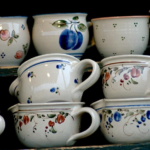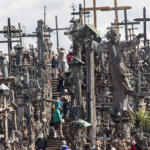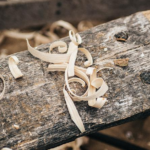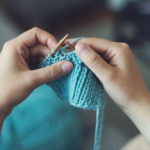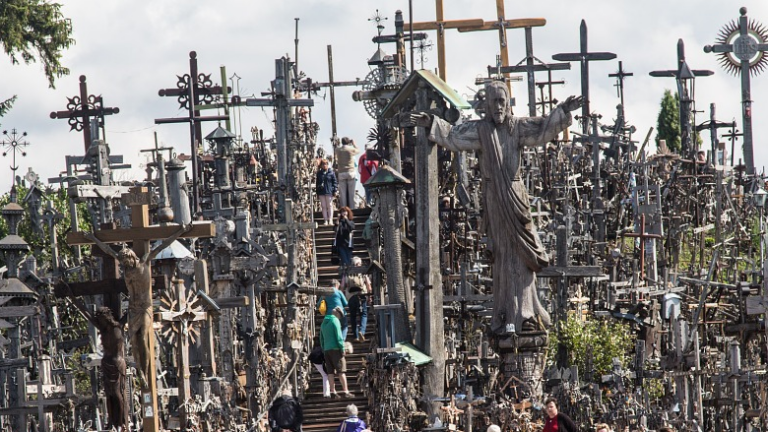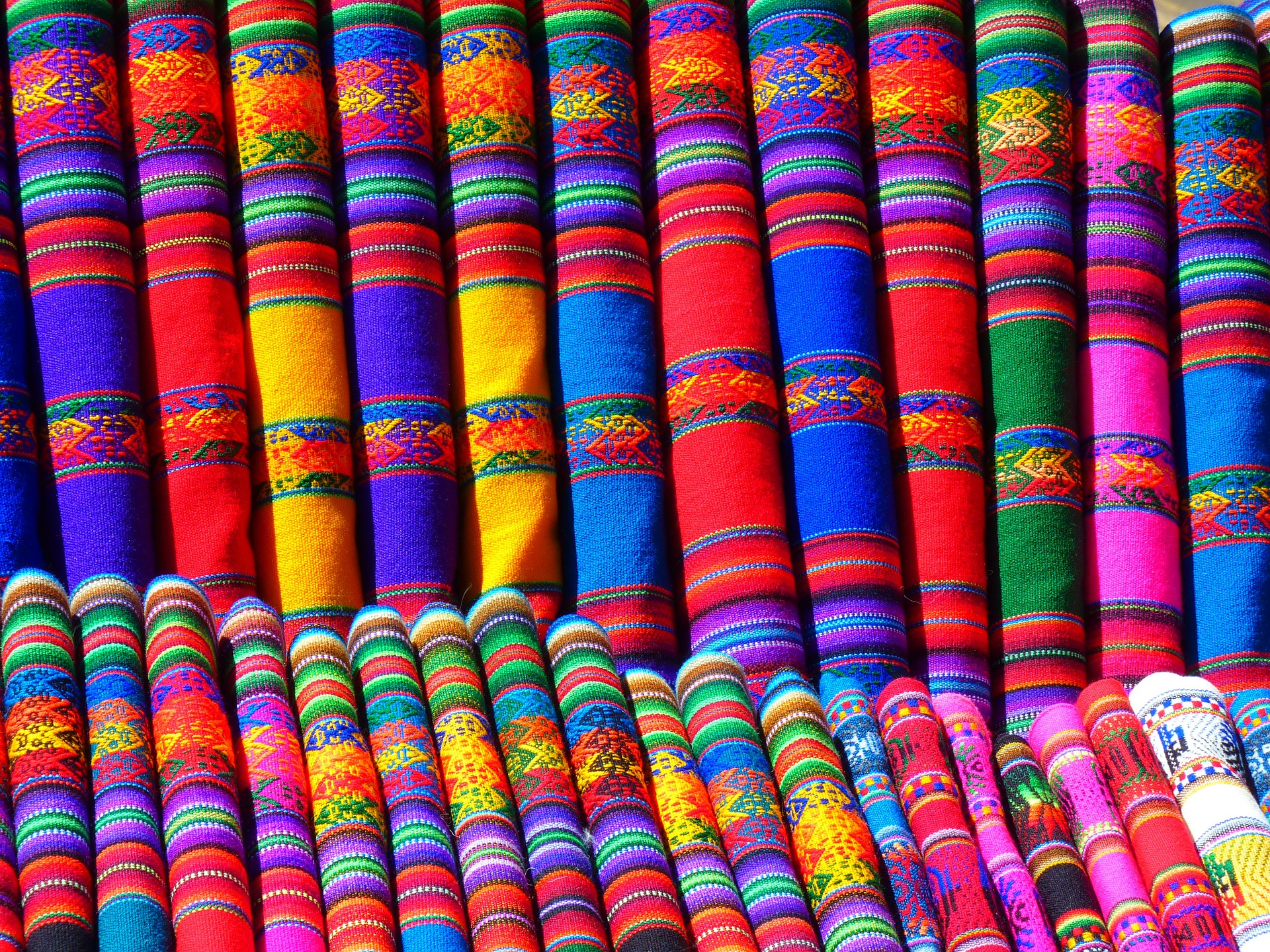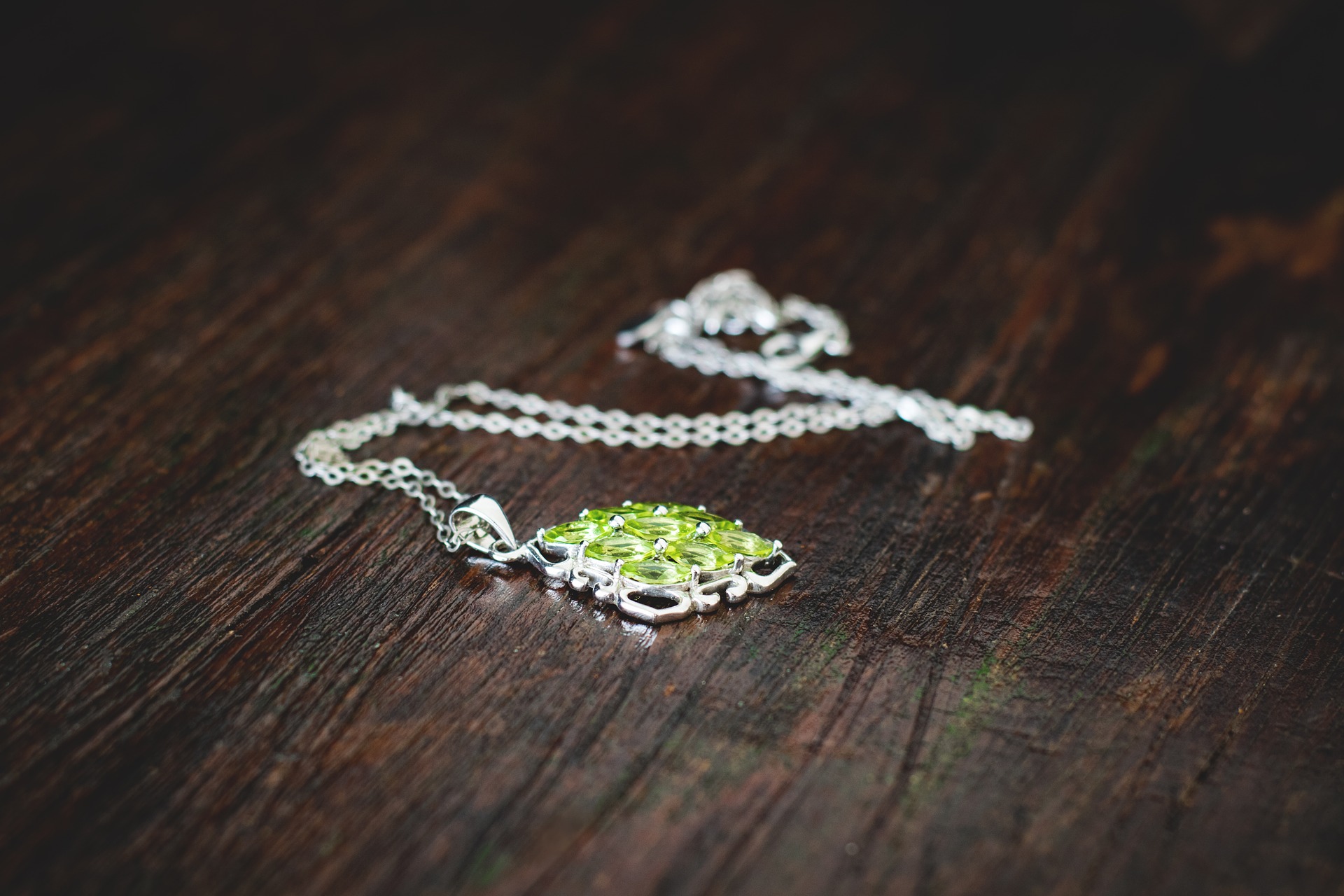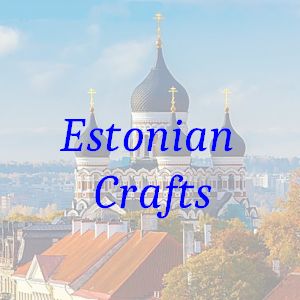
Lithuanian folk art is one of the oldest expressions of Lithuanian culture, as is proved by a variety of archeological artifacts. Over the course of time, the tree of Lithuanian culture branched out in three main directions: language, folklore and song, as well as folk art. The latter was influenced by the environment, the climate, various locations and resources, and also customs, which determined the purpose of the object, its form, its unique coloration and variation of pattern.
–Ceramics – Keramika
potters had small workshops and provided the peasants with the necessary jugs, pots, plates, candleholders, vases, and figurines. Each potter developed his own characteristic style and made his own glazes. Ceramics were produced in two ways: 1) the pattern was applied to the greenware upon removal from the wheel, or after firing, the pattern was painted on the pottery and then re-fired.
–Costumes – Tautiniai drabužiai
The national costumes were known for the beauty of their colours, variety of patterns, and distinctive style. Until the twentieth century, a Lithuanian girl would weave her own wedding dress and costumes for festive occasions, as well as work clothes. The weaving technique, patterns, colours, and cut of national costumes are categorized according to seven regions of Lithuania: Aukštaitija, the Vilnius region, Dzūkija, Zanavykija, Mažoji Lietuva (Lithuania Minor), and Žemaitija (Samogitia).
— Crosses – Kryžiai
Lithuania is known as the Land of Crosses, and is famous for the Hill of Crosses near Šiauliai. The countryside is dotted with many ornamental wooden crosses and miniature chapel-posts or shrines erected at crossroads, in front of homesteads, and in cemeteries. They vary widely in style and ornamentation, and are an art form in themselves. There is a specific word for the folk artist who makes crosses: “kryždirbys”. The carving of crosses (cross-crafting) was recognized as a UNESCO Immaterial World Heritage art as of 2001.
The famous Hill of Crosses, a pilgrimage site for several hundred years, is a testament to Lithuanian faith and perseverance. During Soviet rule, the crosses were destroyed with bulldozers more than once, and locals would rebuild them almost overnight. There are over 200,000 crosses on the Hill.
–Easter Eggs – Margučiai
IMG_2598The colouring of Easter eggs with natural dyes was a very popular tradition among the peasants. Either a pattern was applied to the egg with wax before dyeing, or else the whole egg was dyed first and patterns were made by scratching away the dye in certain areas with pointed tool. The ornamented eggs were used as decorations for the festive Easter table and as gifts. The patterns used for eggs decorated with wax are distinct from the motifs and composition used for the scratch technique.
— Jewellery – Papuošalai
Amber has been used for adornment since Neolithic times. Lithuanians have always loved this semi-precious stone, Baltic Gold, and endow it with healing and magical power to this day.
Everything you want to know about amber is in the beautifully illustrated volume, Amber, published in Lithuania in 2015 by the Vilnius Academy of Arts Press (in English).
— Metalwork – Metalo darbai
Iron crosses and church spires another iconic art form, and are often used to decorate cemeteries, monuments and memorials. Many of their motifs hark back to pagan times. Blacksmiths also forged tools and other farm and household items.
–Papercut Art – Karpiniai
In Lithuania, paper cutting has been practiced as an art since the 16th century (some sources say – the 14th) and was especially popular for decorations at weddings and other special events. By the end of the 19th century, it was widely used as decoration for the home – to cover a window, trim a shelf, a lamp or a mirror frame.
–Straw Art – Šiaudinukai
The art of straw ornamentation is a folk art brought from Lithuania by post WW II emigres. As in the area of weaving art, Antanas and Anastazija Tamošaitis were instrumental in promoting and preserving this craft, and Antanas had prepared the material for a book on this subject in 1988-1989, “Lithuanian Straw Art”. It was never published, however, the Lithuanian Folk Art Institute is pleased to present excerpts from the manuscript here, exclusively on this website.
— Knitting & Textiles – Audiniai
Until the 20th century there were no textile mills in Lithuania. Peasants would spin linen and wool, and weave all their own cloth to make their garments, bedspreads, bed sheets, towels, and tablecloths. Sashes were woven not only for use as belts, but also as gifts and special mementos. Each family had its own loom. The custom was that a bride would take to her new home at least two dowry chests of woven cloth for the future needs of her family. These were her riches, and a matter of great pride. Lacework, knitting and crochet are still very popular, and the traditional patterns often echo the motifs used in weaving.
–Wood Carving and Woodcuts – Medžio drožiniai
Simply but profusely carved towel racks, distaffs, spoon holders, and spoons, along with the spinning wheel, loom, and decoratively painted dowry chests, contributed to the cozy home atmosphere.
The seated figure of a pensive Christ, “Rūpintojelis”, became the symbol of Lithuanian folk art sculpture. Carvers also made various musical instruments out of wood, especially “kanklės”, a type of zither. Paintings were mostly of saints, painted in oils on wood by amateur craftsmen. Woodcutters also engraved pictures on wooden blocks (woodcuts), coloured them, and made prints.

